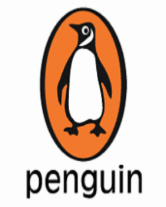Philipok
by Leo Tolstoy
Discussion and Activities
For pre-reading ideas and background information on multiculturalism, see Around the World in 80 Books: A Multicultural Guide.
Philipok shows interest in learning his alphabet and learning to read, even though his mother says he is too young for school. Readers will see that the letters of the Russian alphabet, as shown in various illustrations throughout the book, are different from our own, which is based on the Roman alphabet. The Russian (or Cyrillic) alphabet was named for St. Cyril, a Greek monk who brought written language to Christian converts in the mid-19th century, in what later became Russia. Simplified in the early 18th century by Peter the Great, the alphabet now has 33 letters. Using Internet or library resources, familiarize students with the letters of the Russian alphabet and their pronunciations. Students may then create name tags in Russian, coloring and decorating them in the spirit of Gennady Spirin's detailed illustrations.
The landscape surrounding Philipok's log cabin is lined with birch trees. Known for its strong, paper-like qualities, the bark of the birch tree has served many practical purposes in building and craft making, and the tree itself has been praised in poetic verse. Today, since the stripping of real birch bark is no longer advocated, because it kills the trees, children can enjoy making their own realistic-looking birch bark.
Wet the entire surface of a heavyweight watercolor paper with a wide brush. Lay pieces of toilet paper across the paper, covering it completely. (Toilet paper will crinkle up and stick to wet paper.) While the paper is still wet, paint small areas with light rust and gray water paints. Let dry. Use a fine brush to paint black lines imitating bark patterns across the paper. After drying, textured "birch bark" is ready for display.







